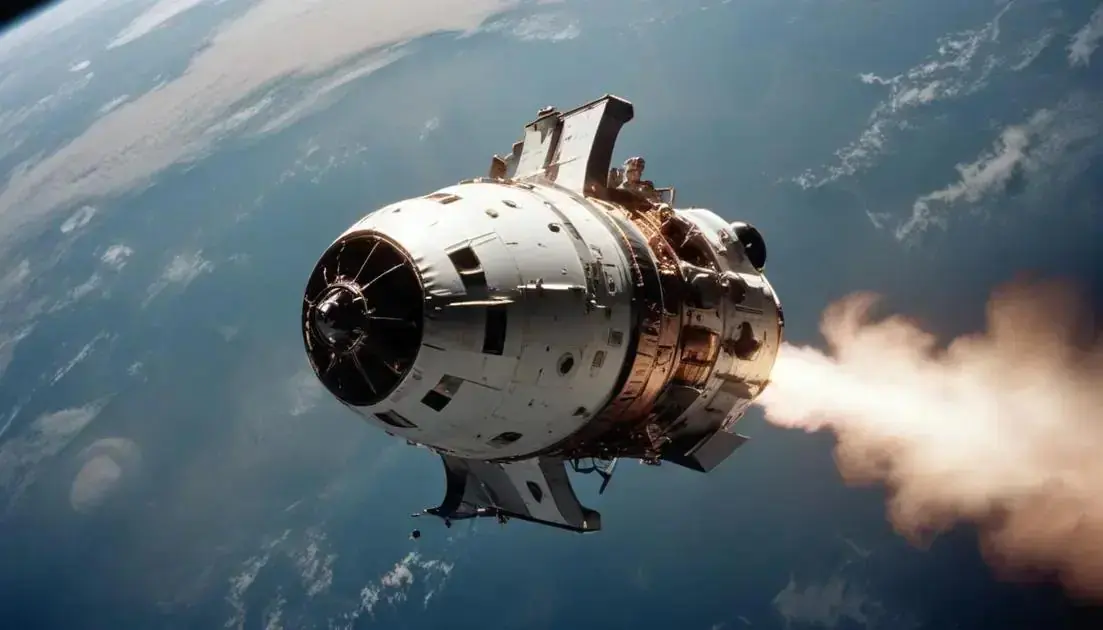
Soviet Flights and Lunar Missions: Political and Scientific Ambition
The legacy of the USSR in space exploration significantly shaped modern scientific advancements. Their early missions, including the launch of Sputnik and the first human in space, laid the groundwork for current space programs and international collaborations like the ISS. Innovations from these missions impact today’s technology and inspire future generations of explorers as we aim for Mars and beyond.
Welcome to a journey through Space Exploration, where the USSR carved its mark with pioneering missions that changed the course of history! Are you ready to dive into this fascinating chapter?
Introduction to Soviet Space Achievements
Soviet space achievements are fascinating and full of history. The USSR was the first to put a human in space. That was Yuri Gagarin in 1961. He orbited the Earth and made history. This was a massive step for mankind!
Another great achievement was the first spacecraft to land on the moon. Luna 2, which flew in 1959, was the first human-made object to reach the moon’s surface. It gave us valuable data about our lunar neighbor.
Key Milestones in Space
Each space mission helped to show how talented the Soviet scientists were. From sending the first dog, Laika, into space to exploring Mars with unmanned missions, these milestones are impressive. Each event taught scientists more about space and our place in it.
The Role of Politics in Space
Politics played a big role in pushing the limits of space travel. The Space Race between the USSR and the USA led to rapid developments. Politicians supported these missions because they wanted to show their strength and technical skill.
Attention to these achievements not only highlights the bravery of those involved but also shows how space exploration can unite us. Understanding our achievements gives us hope for future explorations and discoveries.
Key Milestones in Lunar Exploration
Lunar exploration has many important milestones that changed how we see the moon. One of the first was Luna 2, launched in 1959 by the USSR. It was the first spacecraft to reach the moon. This mission Was a huge success!
Then came Luna 9 in 1966. This was the first craft to land softly on the moon and send back pictures. Imagine seeing the moon’s surface for the first time! It made people excited about space.
From Humans to Rovers
With Apollo 11 in 1969, Neil Armstrong and Buzz Aldrin became the first humans to walk on the moon. Armstrong’s famous words, “That’s one small step for man, one giant leap for mankind,” echo in our minds. This was a great moment in history.
Later, the moon saw more robots like the Lunar Rovers. These rovers explored the lunar landscape, gathering data and sending it back to Earth. Scientists learned so much from these missions.
Modern Connections
Today, countries like China and India take part in lunar exploration. Their missions help us further understand the moon. Each step taken opens new doors in space science.
Key milestones provide a roadmap of humanity’s journey with the moon. They inspire future generations to explore beyond what we know now.
The Role of Politics in Space Missions
Politics has always played a big part in space missions. During the Cold War, the Space Race began between the USSR and the USA. Both countries aimed to show their strength and technology.
Soviet leaders wanted to prove their superiority. The first successful launch of Sputnik in 1957 shocked the world. This satellite was the first object sent into space and marked the start of the Space Age.
Funding and Support
Government support was crucial for funding these missions. The leaders saw space exploration as a way to boost national pride. More money and resources went into developing rockets, satellites, and other technologies.
Every successful launch brought great pride. It proved the capabilities of the scientists and engineers behind the scenes. Political leaders celebrated these achievements and used them to enhance their image.
Influencing Research and Goals
Politics also influenced research goals. Often, missions focused on what would gain the most political favor. This can be seen in the lunar missions, which aimed to land humans on the moon first.
Today, countries still use space as a stage for international prestige. New partnerships form while old rivalries continue. Politics and space exploration have a close bond that shapes our view of the universe.
Scientific Advances from Soviet Missions
Soviet space missions brought a lot of amazing scientific advances. These missions helped us learn about space and our own planet. They opened the door to many discoveries.
One major advance was the data collected from space satellites. These satellites studied the Earth’s atmosphere, weather patterns, and natural resources. This data was crucial for scientists and researchers.
Understanding the Moon and Beyond
The Luna program taught us valuable information about the moon. Sample returns from lunar missions gave insights into lunar geology. This helped in understanding the moon’s origins and its role in the solar system.
Other missions, like Venera, explored Venus and sent back vital information. The data helped us learn about extreme temperatures and atmosphere on other planets.
Innovations in Technology
Each mission brought new technologies. The USSR developed powerful rockets and reliable life-support systems. These innovations are still important today.
Moreover, many tools and practices used in medicine and technology today stem from space research. For example, techniques to develop materials and understand human health improved because of space missions.
Overall, the scientific advances from Soviet missions significantly impacted not only space exploration but also daily life.
The Legacy of the USSR in Modern Space Exploration
The legacy of the USSR in space exploration is significant and lasting. Their early missions laid the groundwork for all space efforts today.
From launching Sputnik to sending the first human into space, these achievements made history. They sparked interest in space and technology worldwide.
Influence on Current Programs
Modern space agencies, like NASA and ESA, learned from the Soviet approach. The focus on robotics, like the Mars rovers, draws from past experiences. Many technologies we use today came from early Russian innovations.
Furthermore, space exploration has become more collaborative. Countries build on each other’s successes. The ISS (International Space Station) is a great example of this teamwork.
Inspiring Future Generations
Children today still dream of becoming astronauts, inspired by USSR’s early missions. The achievements of the past motivate new explorers to reach beyond Earth.
As nations look to Mars and beyond, the foundational work done by the USSR remains crucial. The spirit of exploration continues, reminding us that we can achieve great things together.
Conclusion
In conclusion, the achievements of the USSR in space exploration have had a lasting impact on modern science and technology. Their pioneering missions paved the way for many advancements we benefit from today. From groundbreaking launches like Sputnik to the first human in space, these milestones inspired generations to dream about what lies beyond our planet.
Today, we see the influence of these early efforts in international collaborations like the ISS. Nations now work together, building on the successes of the past. This spirit of teamwork continues to drive our ambitions for future space exploration.
As we look forward to exploring Mars and beyond, the legacy of the USSR remains crucial. Their vision and courage remind us that with determination and collaboration, we can achieve remarkable things. The journey of exploration is far from over, and the possibilities are endless!


